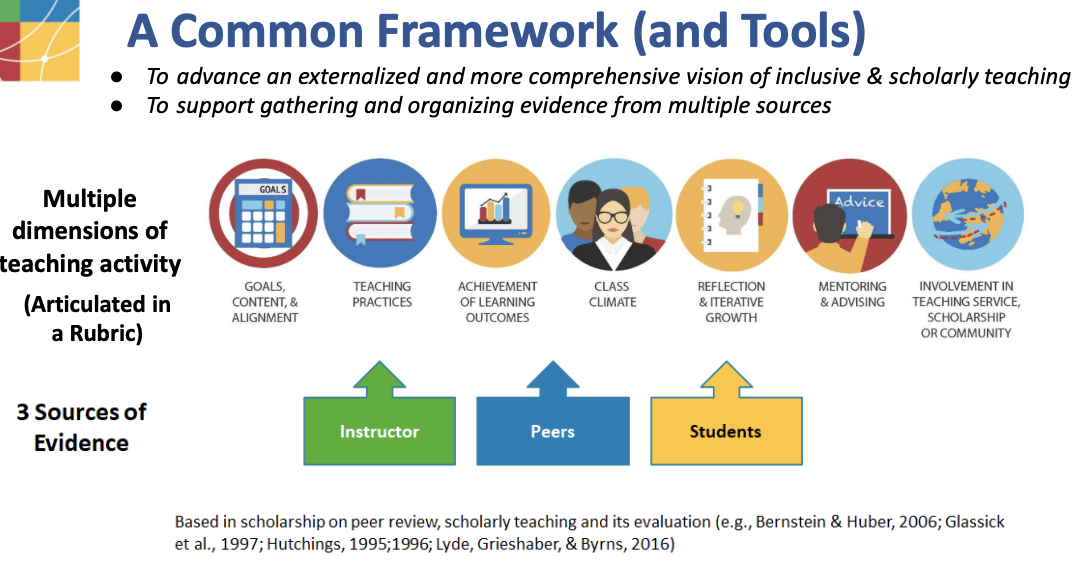Materials -> Frameworks and Rubrics
As a focal point around which to coordinate efforts across TEval sites, a general framework and rubric - developed at KU and titled Benchmarks for Teaching Effectiveness - has acted as a starting point for each involved university and their departments.
Each campus has a variety of approaches and examples for how these materials are contextualized to a campus and to individualized units. See: KU, CU, UMass examples
Seven teaching dimensions viewed through three lenses comprise TEval's starting-point framework and rubric:

In some cases, departments chose to focus on a subset of these dimensions, or to replace one or more dimensions. Similarly, departments often chose their own weighting and descriptions for each dimension.
In addition to utilizing locally defined versions of this general framework and rubric, each department can choose how it wishes to view teaching effectiveness through three lenses; student lens, instructor lens, and peer lens. Here again, each department can choose how to weight each input and each department can choose what specific instruments they wish to use for each lens.
